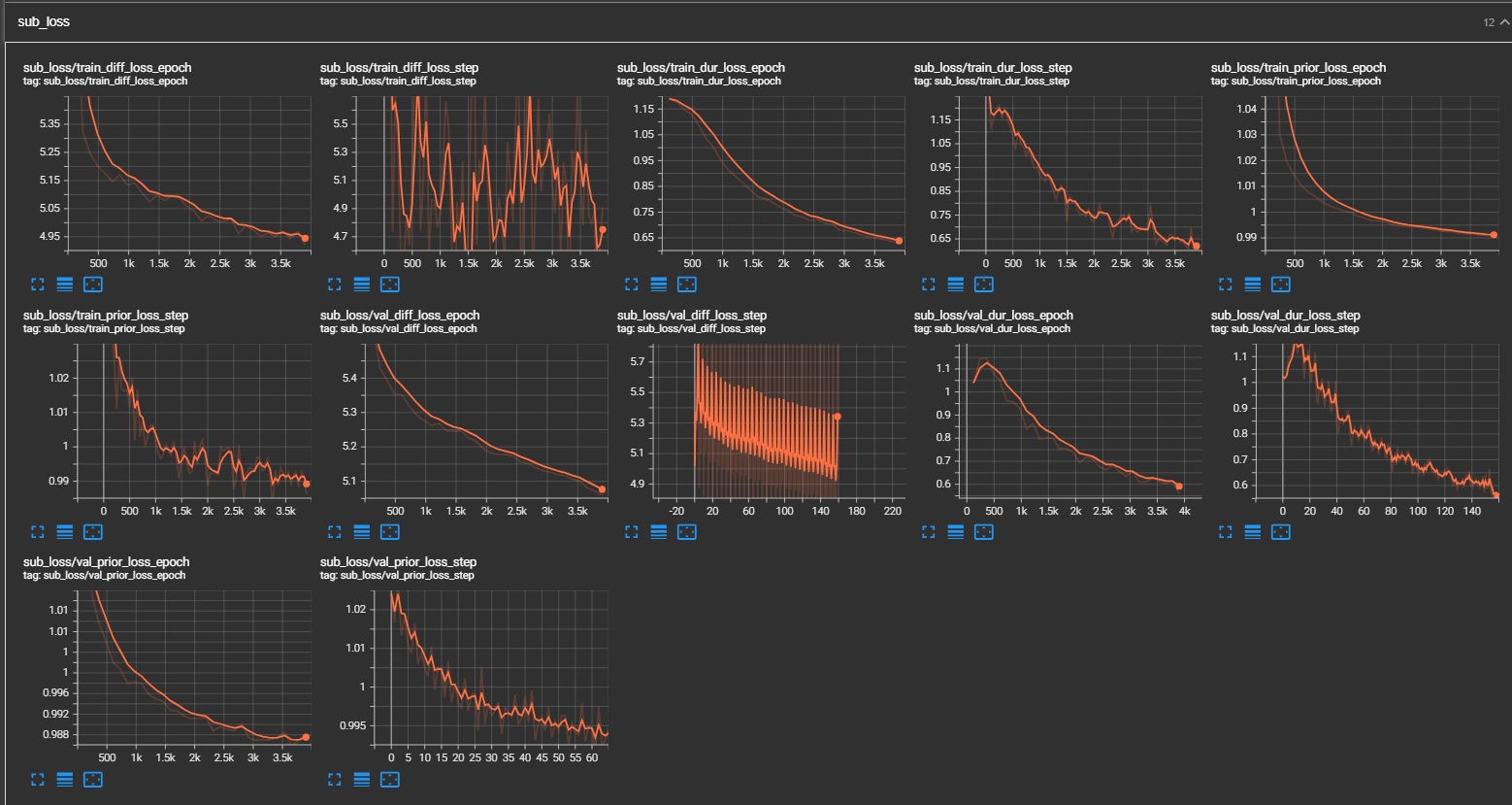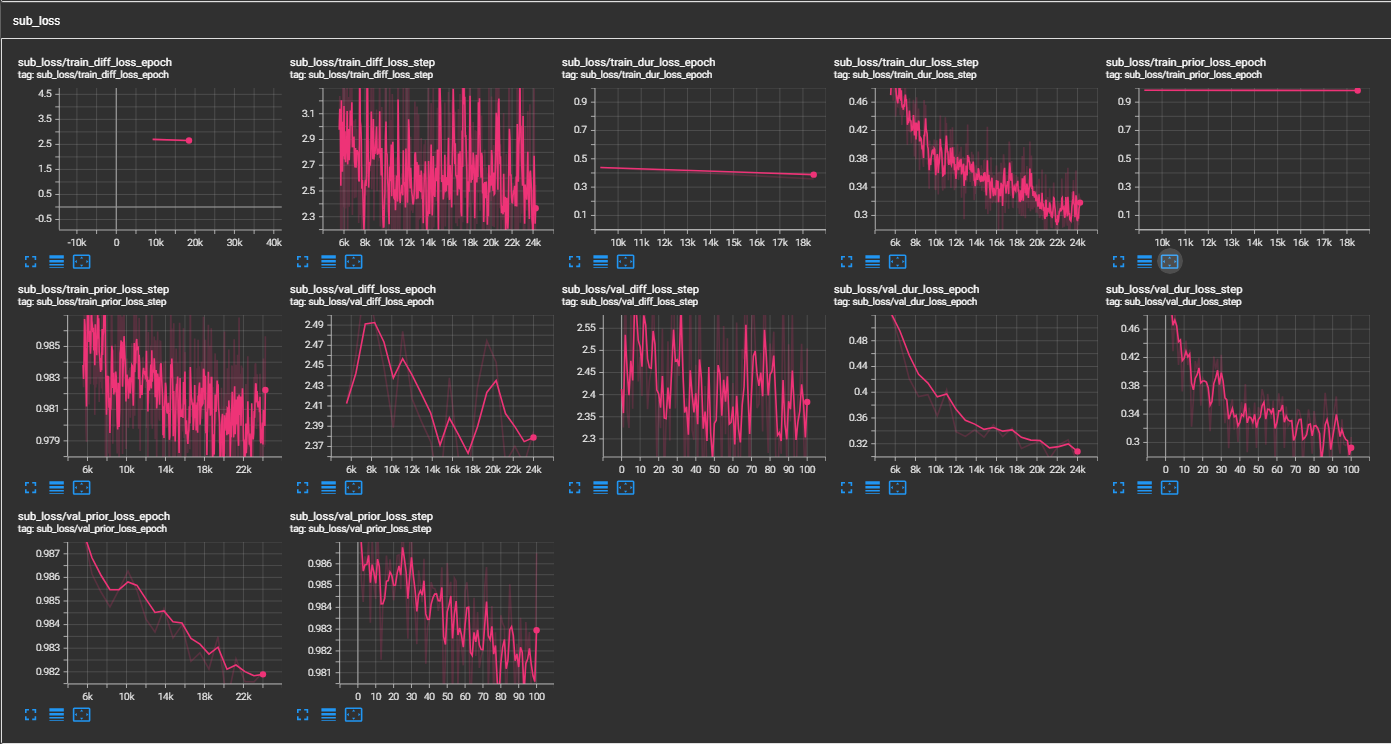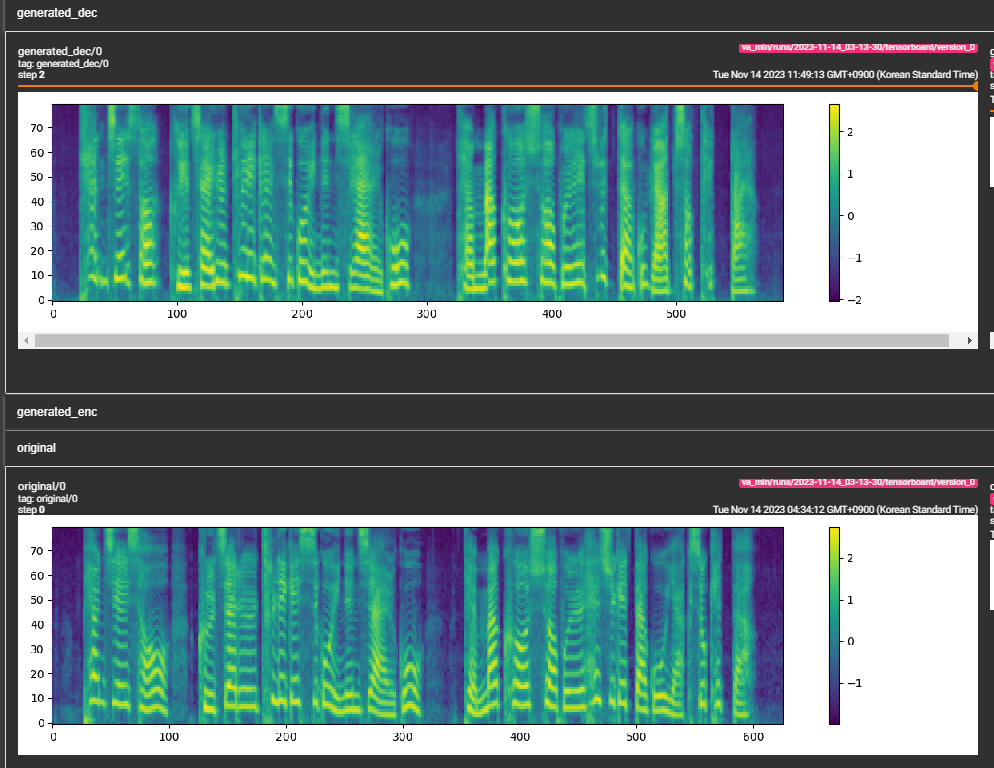Authors : Sungwon Kim, Kevin J Shih, Rohan Badlani, Joao Felipe Santos, Evelina Bhakturina,Mikyas Desta1, Rafael Valle, Sungroh Yoon, Bryan Catanzaro
Unofficial implementation of the paper P-Flow: A Fast and Data-Efficient Zero-Shot TTS through Speech Prompting by NVIDIA.
While recent large-scale neural codec language models have shown significant improvement in zero-shot TTS by training on thousands of hours of data, they suffer from drawbacks such as a lack of robustness, slow sampling speed similar to previous autoregressive TTS methods, and reliance on pre-trained neural codec representations. Our work proposes P-Flow, a fast and data-efficient zero-shot TTS model that uses speech prompts for speaker adaptation. P-Flow comprises a speechprompted text encoder for speaker adaptation and a flow matching generative decoder for high-quality and fast speech synthesis. Our speech-prompted text encoder uses speech prompts and text input to generate speaker-conditional text representation. The flow matching generative decoder uses the speaker-conditional output to synthesize high-quality personalized speech significantly faster than in real-time. Unlike the neural codec language models, we specifically train P-Flow on LibriTTS dataset using a continuous mel-representation. Through our training method using continuous speech prompts, P-Flow matches the speaker similarity performance of the large-scale zero-shot TTS models with two orders of magnitude less training data and has more than 20× faster sampling speed. Our results show that P-Flow has better pronunciation and is preferred in human likeness and speaker similarity to its recent state-of-the-art counterparts, thus defining P-Flow as an attractive and desirable alternative.
- Of course the kind author of the paper for taking some time to explain me some details of the paper that I didn't understand at first.
- We will build this repo based on the VITS2 repo, MATCHA-TTS repo and VoiceFlow-TTS repo
cd pflowtts_pytorch/notebooksimport sys
sys.path.append('..')
from pflow.models.pflow_tts import pflowTTS
import torch
from dataclasses import dataclass
@dataclass
class DurationPredictorParams:
filter_channels_dp: int
kernel_size: int
p_dropout: float
@dataclass
class EncoderParams:
n_feats: int
n_channels: int
filter_channels: int
filter_channels_dp: int
n_heads: int
n_layers: int
kernel_size: int
p_dropout: float
spk_emb_dim: int
n_spks: int
prenet: bool
@dataclass
class CFMParams:
name: str
solver: str
sigma_min: float
# Example usage
duration_predictor_params = DurationPredictorParams(
filter_channels_dp=256,
kernel_size=3,
p_dropout=0.1
)
encoder_params = EncoderParams(
n_feats=80,
n_channels=192,
filter_channels=768,
filter_channels_dp=256,
n_heads=2,
n_layers=6,
kernel_size=3,
p_dropout=0.1,
spk_emb_dim=64,
n_spks=1,
prenet=True
)
cfm_params = CFMParams(
name='CFM',
solver='euler',
sigma_min=1e-4
)
@dataclass
class EncoderOverallParams:
encoder_type: str
encoder_params: EncoderParams
duration_predictor_params: DurationPredictorParams
encoder_overall_params = EncoderOverallParams(
encoder_type='RoPE Encoder',
encoder_params=encoder_params,
duration_predictor_params=duration_predictor_params
)
model = pflowTTS(
n_vocab=100,
n_feats=80,
encoder=encoder_overall_params,
decoder=None,
cfm=cfm_params,
data_statistics=None,
)
x = torch.randint(0, 100, (4, 20))
x_lengths = torch.randint(10, 20, (4,))
y = torch.randn(4, 80, 500)
y_lengths = torch.randint(300, 500, (4,))
dur_loss, prior_loss, diff_los, attn = model(x, x_lengths, y, y_lengths)
# backpropagate the loss
# now synthesises
x = torch.randint(0, 100, (1, 20))
x_lengths = torch.randint(10, 20, (1,))
y_slice = torch.randn(1, 80, 264)
model.synthesise(x, x_lengths, y_slice, n_timesteps=10)- Create an environment (suggested but optional)
conda create -n pflowtts python=3.10 -y
conda activate pflowttsStay in the root directory (of course clone the repo first!)
cd pflowtts_pytorch
pip install -r requirements.txt- Build Monotonic Alignment Search
# Cython-version Monotonoic Alignment Search
python setup.py build_ext --inplaceLet's assume we are training with LJ Speech
- Download the dataset from here, extract it to
data/LJSpeech-1.1, and prepare the file lists to point to the extracted data like for item 5 in the setup of the NVIDIA Tacotron 2 repo.
3a. Go to configs/data/ljspeech.yaml and change
train_filelist_path: data/filelists/ljs_audio_text_train_filelist.txt
valid_filelist_path: data/filelists/ljs_audio_text_val_filelist.txt3b. Helper commands for the lazy
!mkdir -p /home/ubuntu/LJSpeech/LJSpeech-1.1/filelists
!wget -O /home/ubuntu/LJSpeech/LJSpeech-1.1/filelists/ljs_audio_text_test_filelist.txt https://raw.githubusercontent.com/NVIDIA/tacotron2/master/filelists/ljs_audio_text_test_filelist.txt
!wget -O /home/ubuntu/LJSpeech/LJSpeech-1.1/filelists/ljs_audio_text_train_filelist.txt https://raw.githubusercontent.com/NVIDIA/tacotron2/master/filelists/ljs_audio_text_train_filelist.txt
!wget -O /home/ubuntu/LJSpeech/LJSpeech-1.1/filelists/ljs_audio_text_val_filelist.txt https://raw.githubusercontent.com/NVIDIA/tacotron2/master/filelists/ljs_audio_text_val_filelist.txt
!sed -i -- 's,DUMMY,/home/ubuntu/LJSpeech/LJSpeech-1.1/wavs,g' /home/ubuntu/LJSpeech/LJSpeech-1.1/filelists/*.txt
!sed -i -- 's,train_filelist_path: data/filelists/ljs_audio_text_train_filelist.txt,train_filelist_path: /home/ubuntu/LJSpeech/LJSpeech-1.1/filelists/ljs_audio_text_train_filelist.txt,g' /home/ubuntu/LJSpeech/pflowtts_pytorch/configs/data/ljspeech.yaml
!sed -i -- 's,valid_filelist_path: data/filelists/ljs_audio_text_val_filelist.txt,valid_filelist_path: /home/ubuntu/LJSpeech/LJSpeech-1.1/filelists/ljs_audio_text_val_filelist.txt,g' /home/ubuntu/LJSpeech/pflowtts_pytorch/configs/data/ljspeech.yaml- Generate normalisation statistics with the yaml file of dataset configuration
cd pflowtts_pytorch/pflow/utils
python generate_data_statistics.py -i ljspeech.yaml
# Output:
#{'mel_mean': -5.53662231756592, 'mel_std': 2.1161014277038574}Update these values in configs/data/ljspeech.yaml under data_statistics key.
data_statistics: # Computed for ljspeech dataset
mel_mean: -5.536622
mel_std: 2.116101to the paths of your train and validation filelists.
- Run the training script
make train-ljspeechor
python pflow/train.py experiment=ljspeech- for multi-gpu training, run
python pflow/train.py experiment=ljspeech trainer.devices=[0,1]- Speech prompted text encoder with Prenet and RoPE Transformer
- Duration predictor with MAS
- Flow matching generative decoder with CFM (paper uses wavenet decoder; we use modified wavenet and optional U-NET decoder is included to experiment with)
- Speech prompt input currently slices the input spectrogram and concatenates it with the text embedding. Can support external speech prompt input (during training as well)
- pflow prompt masking loss for training
- HiFiGan for vocoder
- (11/12/2023) Currently it is an experimental repo with many features substituted with quick architecture implementations I found online. I will add the original architectures soon.
- (11/12/2023) Check out
notebooksfor a quick dry run and architecture testing of the model. -
(11/12/2023) Training fails on my dataset at the moment, will debug and fix it soon. But the training the code runs error-free. - (11/13/2023)
- fixed big mistake in monotonic align build
- lot of combinations possible within model
- architecture big picture is same like paper, but internals are different
- if model doesnt converge, will eventually settle to paper's exact architecture
- (11/13/2023) Tensorboard screenshot

- (11/13/2023)
- added installation instructions
- (11/13/2023)
- (11/14/2023)

- (11/14/2023)
- added Google Colab notebook for quick run
- (11/16/2023)
- added sample audio
- some architecture changes
- we know the model learns, now we need to try multispeaker and check for prosody.
- (11/17/2023)
- added 3 new branches ->
- dev/stochastic -> some changes to posterior sampling and text encoder (prior) to make it stochastic
- dev/encodec -> predicts encodec continuous latent instead of mel spectrogram; if works, use encodec for decoding instead of hifi-gan
- exp/end2end -> end to end training of pflow with hi-fi gan to generate audio directly from text and speech prompt input; if it works, vits-tts will be obsolete.
- added 3 new branches ->
- (11/17/2023)
- 24 epochs encodec sample (although robotic, it is a proof of concept) encodec_poc.wav
- Anyone is welcome to contribute to this repo. Please feel free to open an issue or a PR.

